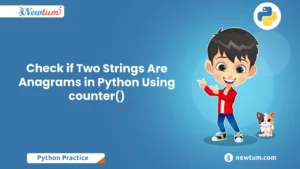Dictionaries are an important data structure in Python, allowing us to store key-value pairs. To iterate over a dictionary and access its keys, Python provides the keys() function. This blog post will walk you through the step-by-step logic and operations of how to iterate over dictionaries in Python using keys() function.
By understanding how to iterate over dictionaries using the keys() function, you will gain the ability to extract, modify, and analyze key-based information in your Python programs. This blog post will provide you with valuable insights and practical knowledge to tackle dictionary iteration efficiently. So let’s get started and write a Python program to iterate over dictionaries using the Keys() function.
Python Program to Iterate Over Dictionaries Using Keys() Function
# Iterate Over Dictionaries in Python Using Keys() Function
# Access key using the build .keys()
countryAndCode = {
'India': 'IND',
'Afghanistan': 'AFG',
'Canada': 'CAN',
'Russia': 'RUS'
}
# we are using an in-build. keys() method
keys = countryAndCode.keys()
# print all the keys in the dictionary
print(keys)
Code Explanation
- Creating the dictionary
In this step, we initialize a dictionary named countryAndCode with key-value pairs representing country names and their corresponding country codes.
- Using the keys() function
Next, we use the keys() function to access the keys of the dictionary. By calling countryAndCode.keys(), we retrieve a view object that contains all the keys in the dictionary.
- Storing the Keys
We assign the view object returned by keys() to a variable named keys. This allows us to work with the keys separately and perform various operations on them.
- Printing the Keys
In the final step, we print the keys of the dictionary using the print() function. By passing the keys variable as the argument, we display all the keys contained in the dictionary.
Output:
The output of the code is a list of all the keys in the dictionary. In this example, the output will be:
dict_keys(['India', 'Afghanistan', 'Canada', 'Russia'])This output is a list-like object that contains all the keys in the dictionary.
There are multiple ways to iterate over dictionary keys
Here are two common alternatives:
- Iterating directly over the dictionary: This method allows you to directly iterate over the dictionary without explicitly calling the keys() function. It automatically iterates over the keys by default.
- Converting keys to a list: This approach involves converting the dictionary keys to a list using the list() function. The resulting list can then be iterated over using a loop or other list-related operations.
We used the keys() function method as it provides a clear and concise way to access only the keys of a dictionary. It explicitly indicates the intention of retrieving the keys, making the code more readable and easier to understand. Also, any changes made to the dictionary are immediately reflected in the view object and It saves memory by not creating a separate list of keys.
In conclusion, the keys() function in Python provides a convenient way to iterate over the keys of a dictionary. It allows us to work with dictionaries more efficiently, enabling us to access specific keys, check for key existence, or perform any desired operations on the keys individually or as a collection. It simplifies the process of extracting and manipulating the keys of a dictionary, enhancing our ability to process and analyze data stored in key-value pairs.
By mastering the usage of the keys() function, you can leverage the power of dictionaries in Python and unlock their full potential. Whether you’re working on data analysis, database management, or any other Python project involving dictionaries, understanding how to iterate over dictionary keys using the keys() function is a valuable skill to have.
FAQs – Iterate Over Dictionaries in Python Using Keys()
Yes, you can modify the dictionary while iterating over its keys using keys().
Since the view object provided by keys() reflects changes made to the dictionary, modifications to the dictionary will be visible during iteration.
No, the keys in the view object returned by keys() are not guaranteed to be in any specific order. The order of the keys is arbitrary and can vary between different runs of the program or versions of Python.
If you need the keys as a list, you can convert the view object to a list using the list() function.
No, the keys() function is specifically designed to work with dictionaries and retrieve the keys associated with their key-value pairs. It cannot be used directly on other iterable objects like lists or tuples.
To iterate over both the keys and values of a dictionary, you can use the items() function, which returns a view object with key-value pairs. This allows you to access and manipulate both the keys and values together in your loop.



